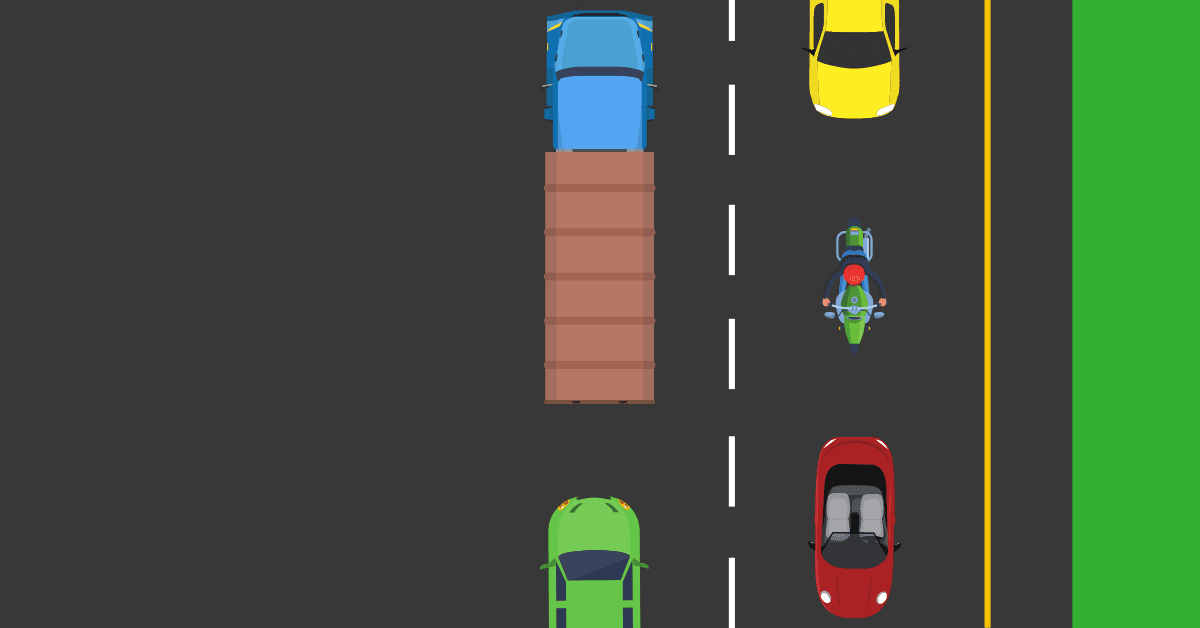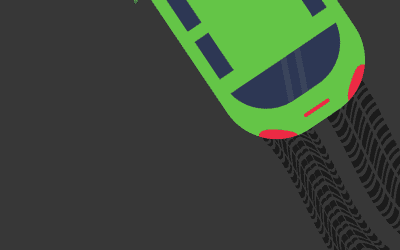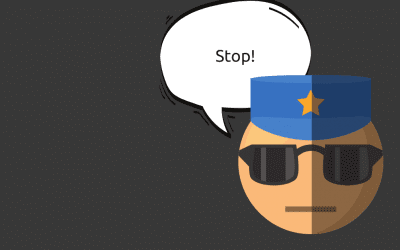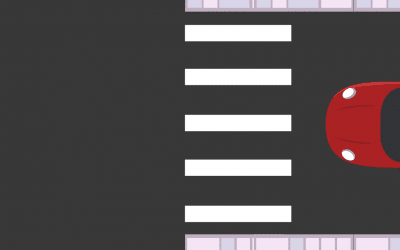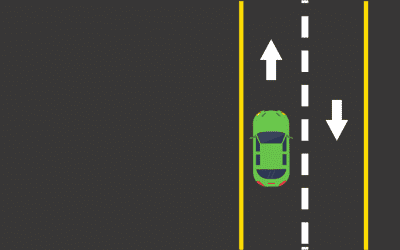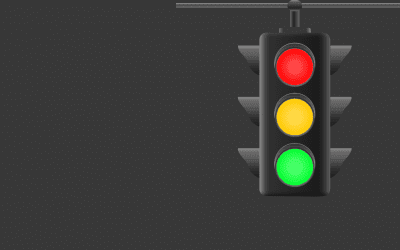Road rules in South Africa, the second part covers freeways, stopping areas, how to transport goods and when a vehicle gets considered abandoned.
Allowed on freeways
A vehicle may stop on the freeway when:
- It is within a designated stopping or parking area.
- It is following a road sign or signal from a traffic officer.
- There is a cause beyond control.
Not allowed on freeways
The following are not permitted on a highway:
- Animal-drawn vehicles.
- Animals, except inside of a car or designated parking or stopping area.
- Bicycles.
- Motorcycles with an engine capacity of 50cc or less.
- Motor tricycles or quadricycles.
- Electricity-powered motorcycles.
- Vehicles that weigh 230kg and are specially adapted or designed for disabled people.
- Tractors, unless they are busy with freeway maintenance or construction.
- Pedestrians, except if they are within a reserved stopping or parking area or in an emergency beyond their control.
- Hand signals except for a cause beyond the driver’s control.

are not allowed on freeways.

and others are not allowed on the freeway
No stopping areas
- When stopping is forbidden by a road sign, road marking or traffic or police officer.
- No stopping next to or opposite construction in progress.
- Road rules in South Africa dictate that vehicles may not stop closer than 6m to a tunnel, a subway, a bridge, or a minimised roadway.
- No stopping vehicles closer than 9m to a pedestrian crossing unless allowing for pedestrians to cross.
- No stops are allowed when facing oncoming traffic.
- A vehicle may not stop next to another car where the road is narrower than 9m.
- Within the railway reserve at a level crossing – always stop behind the solid white line. Vehicles must stop 3 metres from the reserve if no line is visible.

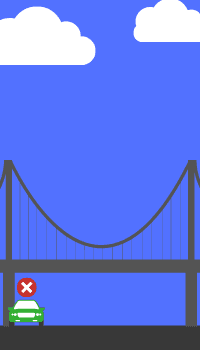
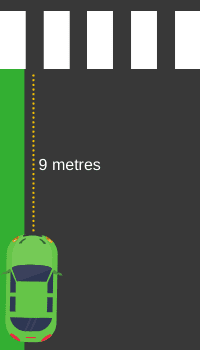
to a pedestrian crossing.
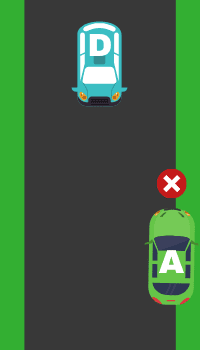
facing oncoming traffic.
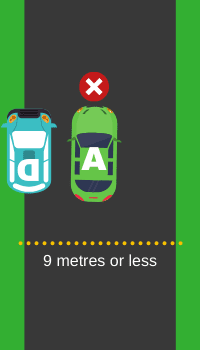
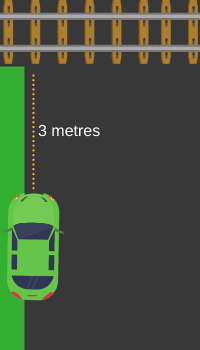
from a railway crossing.
Compulsory stops
According to the road rules in South Africa, vehicles must stop under the following conditions:
- At the steady red light of a robot.
- When approaching a stop sign.
- If instructed by a traffic officer.
- When stopped by someone leading or driving farm animals on the road.
- If stopped by a scholar patrol.
- At a pedestrian crossing where pedestrians are or about to enter the roadway.
- If involved in a collision.
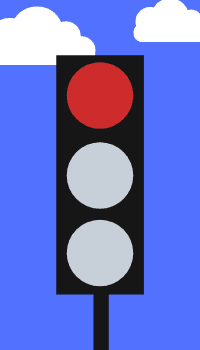



by someone leading animals
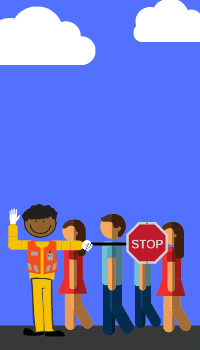
No Parking Areas
Vehicles may not park in the following areas:
- When a road sign or road marking demarcates a no-stopping area.
- Where forbidden by a traffic or police officer.
- Any wheel more than 450mm away from an urban area’s kerb or roadway edge.
- Or within 1m of the road edge on a road outside an urban area.
- On the road adjacent to a fire hydrant or closer than 1.5m on either side of a fire hydrant.
- Within 5m of an intersection in an urban area unless permitted by a road sign.
- On a two-way road narrower than 5.5m in an urban area.
- On or partially on a sidewalk or pavement.
- The vehicle would block the view of a road sign or road marking for other road users.
- Over the actuating mechanism of a traffic light in an urban area.
- On or partially on a traffic island or painted island.
- In a pedestrian area at a mall or pedestrian lane.
- Across or in front of a private or public vehicle entrance.
Abandoned vehicles
According to the road rules in South Africa, a vehicle may be considered abandoned and may be towed away under the following circumstances:
- If it is illegally parked.
- When parked for seven days or more in the same place on an urban road or the site of a testing station.
- A vehicle parked for 24 hours or more in the same public place or street outside an urban area.
- When found on a public road without a legal registration number.
- If authorities cannot identify the ownership of the vehicle.
- When dangerously parked or likely to cause an obstruction.
Conveying goods
When conveying (transporting) goods:
- Road rules in South Africa dictate that goods must be securely fastened to the vehicle.
- The load must not exceed half the height of cars if carried on the roof unless it is a bicycle.
- For goods vehicles, their load must not exceed 4.3m from the ground.
- The width of the load and the vehicle must not exceed 2.6m for vehicles with a gross vehicle mass of 12 000kg and 2.5m for all other vehicles.
- Ensure the load does not project more than 1.8 metres beyond the vehicle’s rear.
For projections more than 150mm from the sides of the vehicle and to indicate the width of the load:
- A driver must, during the day, fix a red flag 300mm x 300mm at each corner of the load.
- From sunset to sunrise, use reflectors at each corner of the load—red reflectors at the back and white reflectors in the front.
Passengers are allowed on the back of a van or truck if:
- The sides of the vehicle are 350mm above the seating surface for seated passengers.
- Also, the sides of the vehicle are 900mm above the floor surface when passengers are standing.
- A driver may transport one person for every 380mm as measured along the back length of the seat at seat level.

